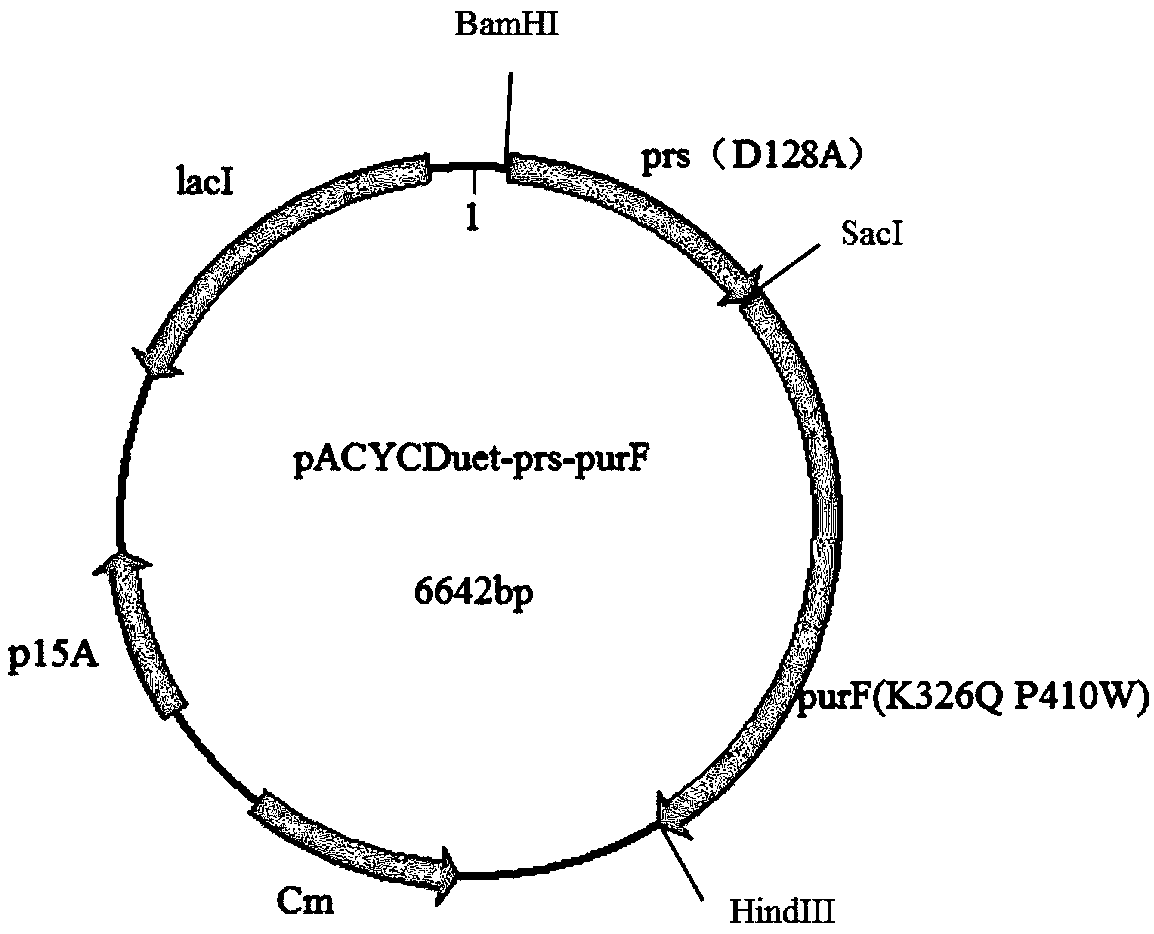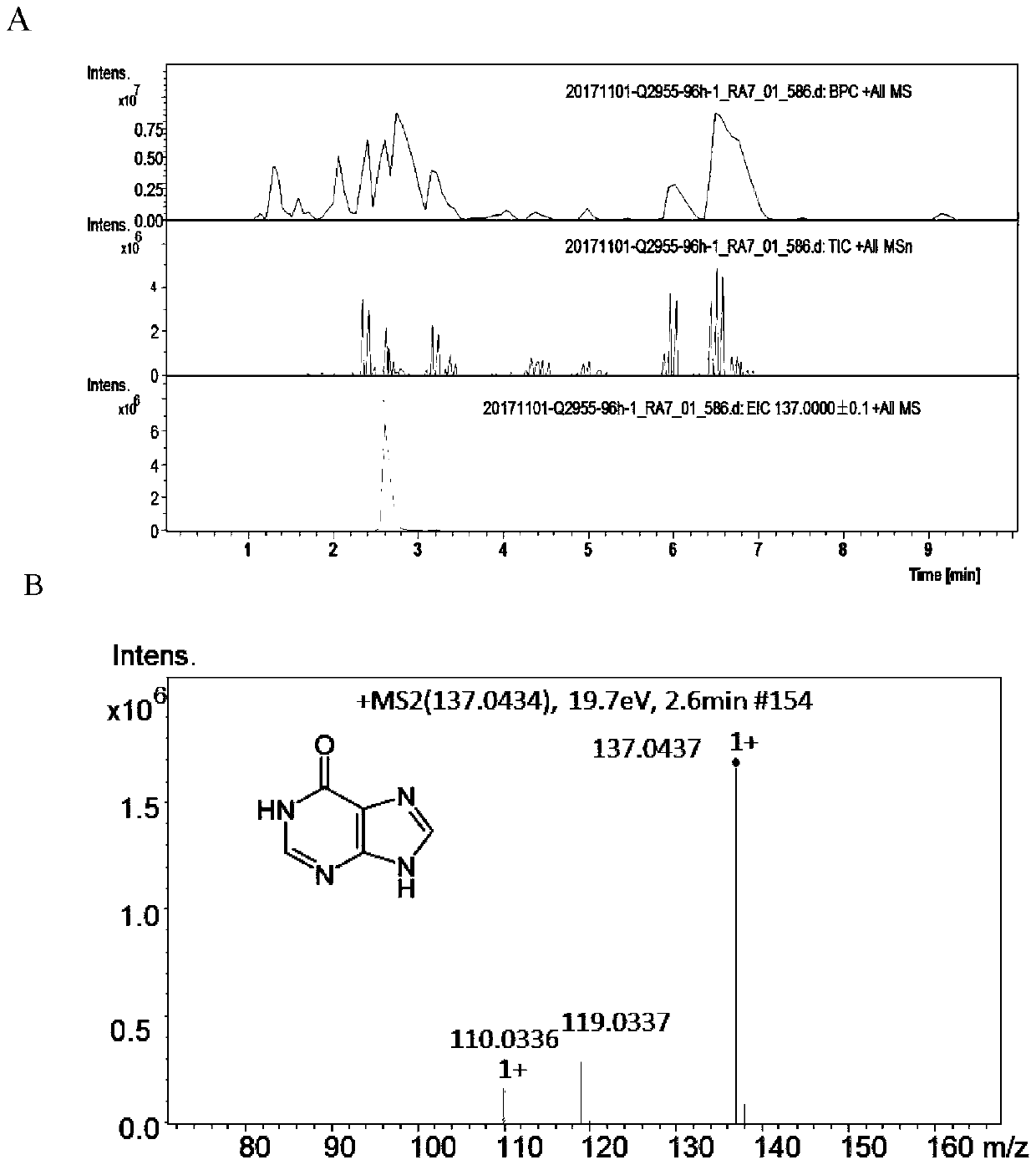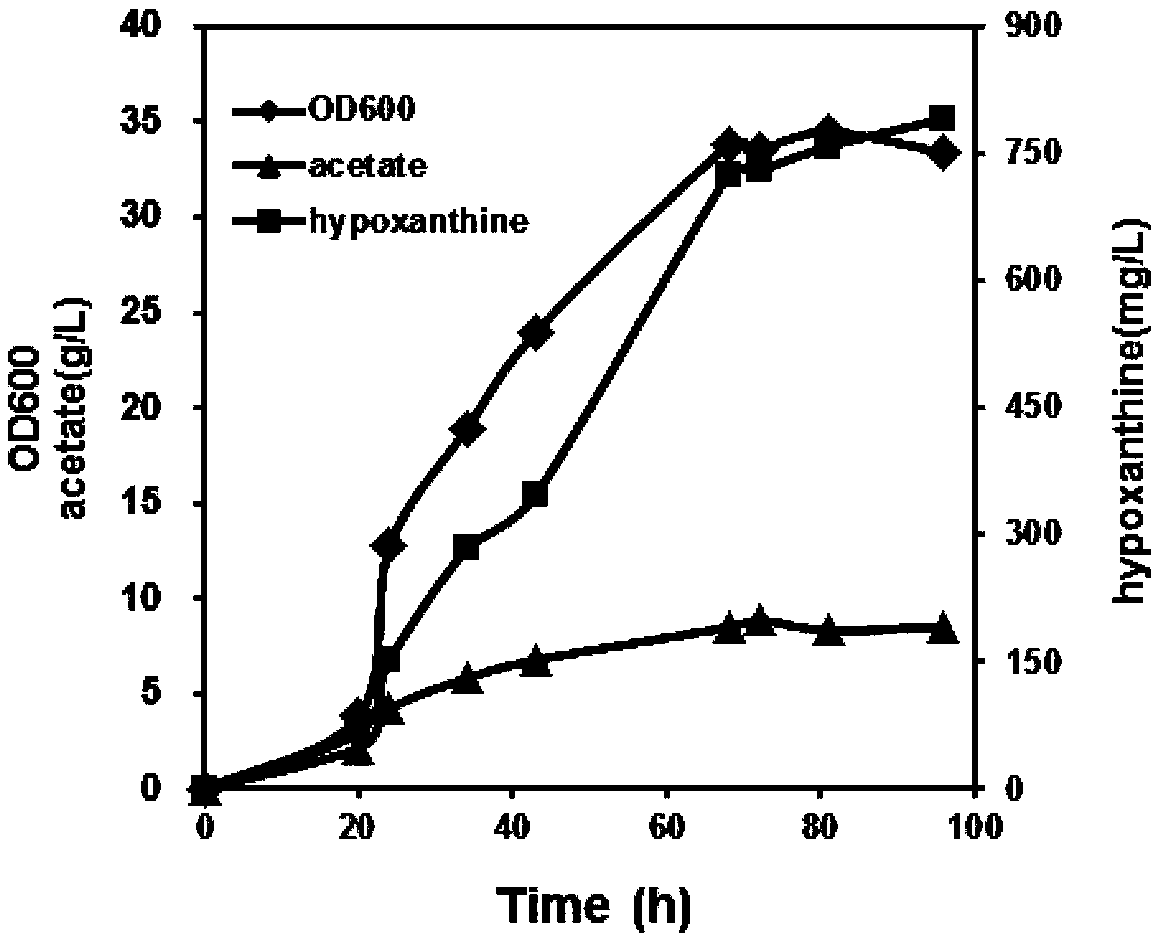Recombinant strain for synthesizing hypoxanthine and construction method and application of recombinant strain
A technology of hypoxanthine and recombinant bacteria, applied in the field of genetic engineering, can solve the problems of difficult to achieve purine accumulation, long synthetic route, and difficult to meet the needs of large-scale biosynthesis of purine compounds
- Summary
- Abstract
- Description
- Claims
- Application Information
AI Technical Summary
Problems solved by technology
Method used
Image
Examples
Embodiment 1
[0064] Embodiment 1: Construction of recombinant bacteria
[0065] 1. Gene knockout (P1 phage transduction method, the principle is as follows Figure 4 shown)
[0066] The knockout of the transcriptional repressor protein gene purR was carried out as follows:
[0067] The transcriptional repressor gene purR (Gene ID: 945226) of E. coli W3110 genome was knocked out by using P1 phage transduction method, using P1 phage to infect the donor strain JW1650 of the Keio Collection library, and preparing the cleavage library of the donor strain, using JW1650 The cleavage library was used to transduce the recipient strain Escherichia coli W3110, and the mutant strain W3110△purR knocking out the transcriptional repressor gene purR was obtained;
[0068] 1) Phage activation
[0069] Add 4ml of heated and melted 0.4% agar medium to a 10ml sterile EP tube, add 400 μL of overnight cultured donor strain JW1650 (the donor strain is derived from the Keio Collection library and can be purcha...
Embodiment 2
[0087] The shake flask fermentation test of embodiment 2 recombinant strains
[0088] The present embodiment carries out two groups of experiments altogether, to illustrate the effect that the present invention can obtain, concrete experimental method is as follows:
[0089] Control group: wild strain E.coli W3110,
[0090] Experimental group: recombinant strain Q2955,
[0091] 1) Inoculate the activated wild strain E.coli W3110 and the recombinant strain Q2955 into a 250mL shake flask containing 50mL fermentation medium (containing 50mg / L chloramphenicol) at a ratio of 1:100, 37°C, 180rpm Shaking culture under conditions. OD 600 When it reached about 0.6, 100 μM IPTG was added to induce expression, and after induction, culture was continued at 30° C. and 180 rpm for 96 hours until the end of fermentation.
[0092] 2) Take 1 mL of fermentation broth, centrifuge at 12000 rpm for 10 min at 4°C, take the supernatant, filter it with a 0.22 μm filter membrane, and detect the fe...
Embodiment 3
[0094] The fermenter experiment of embodiment 3 recombinant strains
[0095] 1) The recombinant strain Q2955 was inoculated into 3 mL of liquid LB medium, shaken overnight at 37°C and 180 rpm, and cultured as the primary seed solution.
[0096] 2) Inoculate the primary seed solution of the activated culture into a 250mL shake flask containing 50mL of fermentation medium (containing 50mg / L of chloramphenicol) according to the ratio of 1:100, shake and cultivate at 37°C and 180rpm for 4h, as a secondary seed solution.
[0097] 3) The secondary seed liquid is inoculated into the fermenter according to the inoculation amount of 2% of the medium volume, the culture temperature is 37°C, the stirring speed is 400-800rpm, 20% dissolved oxygen is related to the speed, and it is automatically adjusted by using ammonia water and 10% sulfuric acid The pH was about 7.0, and the recombinant cells were cultured to an OD600 of 10, and then the inducer IPTG was added to a final concentration ...
PUM
 Login to View More
Login to View More Abstract
Description
Claims
Application Information
 Login to View More
Login to View More - R&D
- Intellectual Property
- Life Sciences
- Materials
- Tech Scout
- Unparalleled Data Quality
- Higher Quality Content
- 60% Fewer Hallucinations
Browse by: Latest US Patents, China's latest patents, Technical Efficacy Thesaurus, Application Domain, Technology Topic, Popular Technical Reports.
© 2025 PatSnap. All rights reserved.Legal|Privacy policy|Modern Slavery Act Transparency Statement|Sitemap|About US| Contact US: help@patsnap.com



